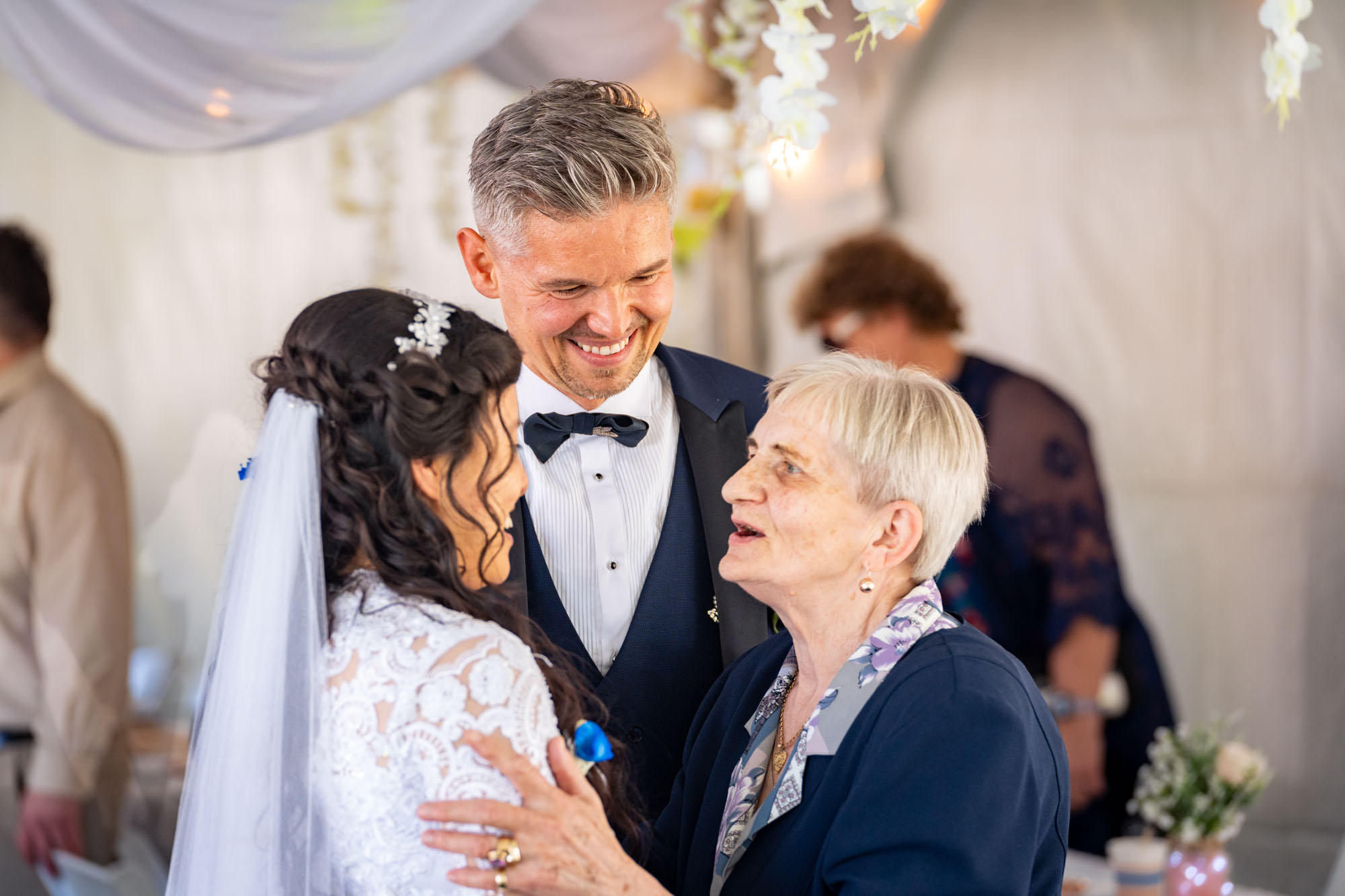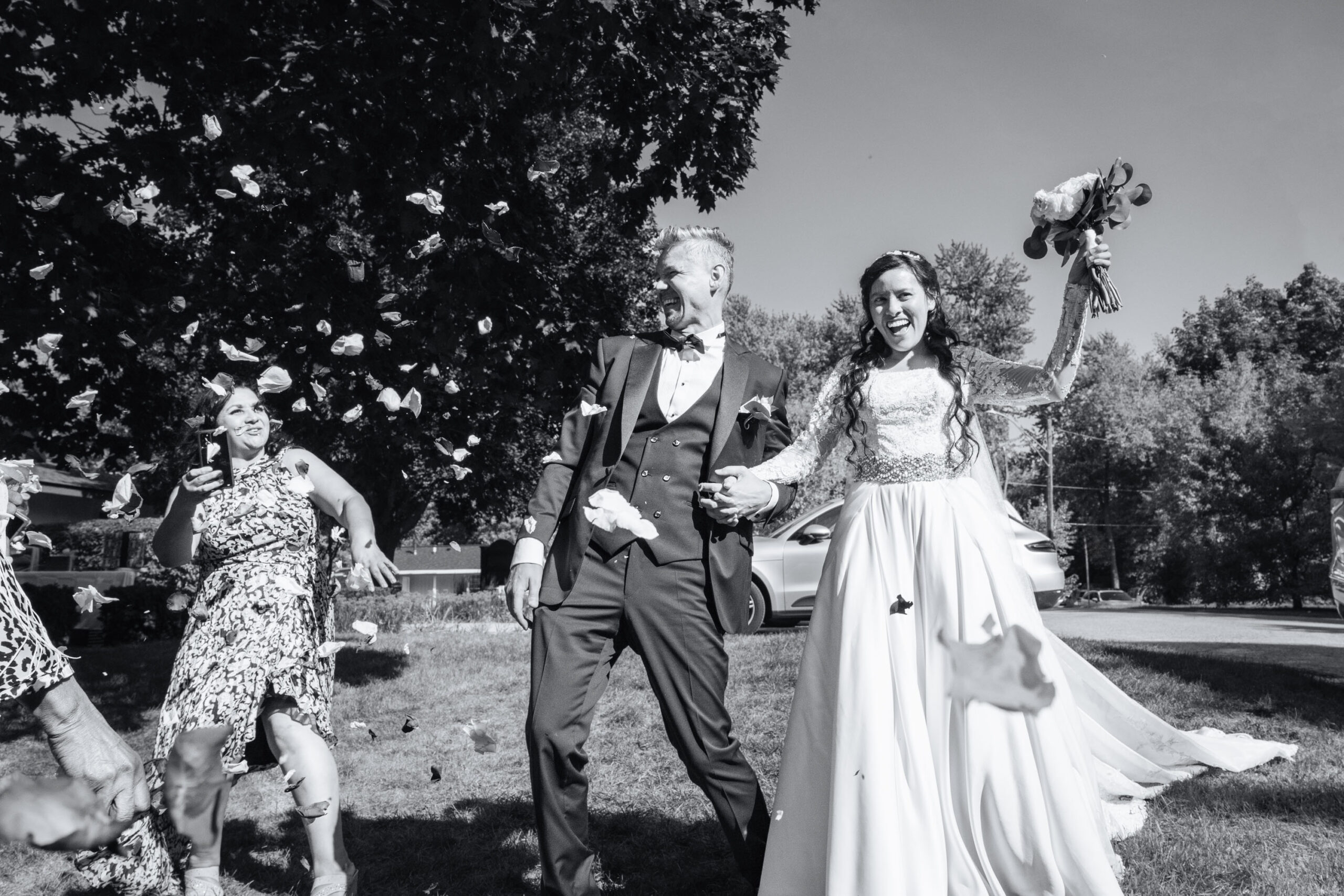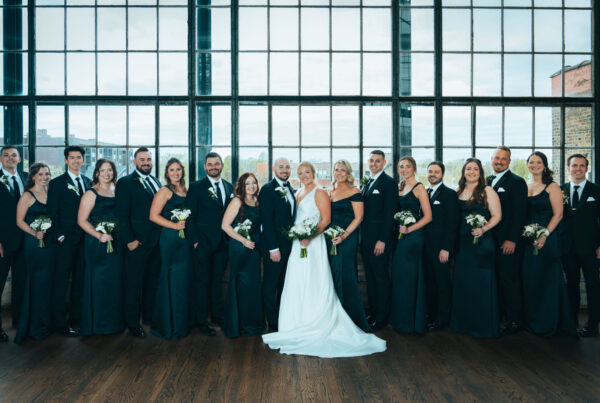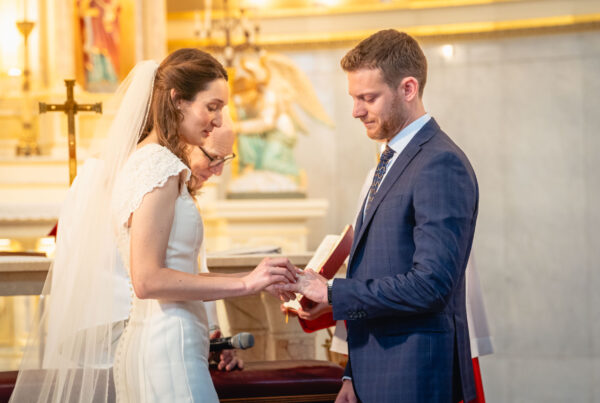
Win a Free Engagement Session!
Sign up for my tips and tricks around your wedding day, and enter for the chance to win a Free Engagement Session!
(Don’t forget to check your spam folder ;)).
Weddings are not only the start of a new chapter in a couple’s life, but they also provide a chance to honor their heritage by incorporating treasured customs into their special day. Polish wedding traditions are particularly unique due to their sentimental and cultural significance. It can be overwhelming to try to take in all the information about the various Polish rituals, beliefs, and customs. Luckily, we can assist you: here are some of the most important customs you should be aware of, whether you’re organizing a Polish wedding or just attending one.
1. The engagement and wedding preparations
In the past, a boy was required to ask the father of the girl for her hand in marriage. Nowadays it’s happening less often. But in the past, there was no other option if you wanted to live a lifetime with someone you loved. It’s interesting to note that historically, rejections for suitors didn’t always end with a simple “no.” A very special soup called “czarna polewka” was served to him, and it was a polite way of telling him that marriage is not possible.
“Czarnina”, or “czarna polewka”, is a soup made from duck blood in Poland. Certain Polish restaurants still serve it, particularly in the north of the country. It is still very common these days for parents to pay for weddings. They frequently put a lot of effort into planning the ceremony. Parents of engaged couples typically get together to go over every aspect of the wedding, including the location and date.
Traditionally, the bride’s hometown should host the wedding. A typical wedding is scheduled two to three years in advance and seats between 100 and 150 guests.
2. Polish Wedding Attire
A white wedding gown with a hint of blue is a popular choice for Polish brides. As in many other cultures, white is associated with purity, and blue is said to represent marital fidelity. Some Polish brides decide to don a hand-painted wedding gown that draws inspiration from traditional Polish customs. The bride may also be seen wearing a “wianek” (flower crown) and braids, which are thought to symbolize freedom, in traditional Polish weddings.
3. The Blessing of Parents
A traditional Polish wedding is always Catholic, which is something to be aware of. The bride’s parents bless the bride and groom at their home before the ceremony begins on the wedding day. They accomplish this by placing the cross on the foreheads of newlyweds and wishing them luck in their future together. In addition, newlyweds occasionally sip champagne and kiss the cross of Jesus. The bride and groom must traditionally kneel, but these days, standing is suitable too.
 4. The Gates
4. The Gates
One of the most wonderful customs associated with Polish weddings is this one. It’s a very ancient Polish tradition. The bride’s neighbors are obstructing the newlyweds’ path to the church by dressing up. The goal is to bribe the “starosta”* or “starościna”* to allow the prospective couple to arrive at church punctually. Of course, the bribe is vodka! The children are receiving sweets. Every “gate” has a distinct theme, and the people inside are role-playing various activities such as butter-making, laundry, etc.
Two individuals at the wedding in charge of the alcohol are “starosta” and “starościna”. Although they are not the bride and groom’s parents, they are typically the closest family members.
The prospective couple is not supposed to leave their car, according to tradition. The responsibility to negotiate the bribe with the neighbors falls on “starościna”, “starosta”, and the parents.
5. Wedding Ceremony In The Church
At the wedding, it is the most significant part. Though there are some Polish customs unique to Poland, the ceremony itself doesn’t require explanation. People in Poland wear rings on their right hands, which is the first thing to notice. Being a widow or widower is indicated by wearing the ring on the left hand.
After the mass, newlyweds observe the second Polish wedding custom that takes place in a church: they spend a few minutes praying to the Virgin Mary. Until they conclude, all of the guests are waiting inside the church.
6. Showering Newlyweds With Coins Or Rice
The newlyweds are frequently doused with money or flowers as they leave the church. It is said to bring them wealth, procreation, and plenty.
7. Polish Bread And Salt Rituals
As the newlyweds and their guests make their way to the hotel or wedding hall, their mothers and fathers should be waiting to welcome them with vodka, bread, and salt. The bread is said to ensure that newlyweds will have enough food for the duration of their marriage. They will be happy and safe from evil thanks to the salt.
The newlyweds are breaking glassware (which is said to bring luck) after taking a shot of vodka and tasting bread with salt.
8. Polish Wedding presents And Wishes
After the blessing, it’s time for the best wishes and giving many gifts. After the ceremony, it is occasionally performed in front of the church. Money is the typical wedding gift in Poland. At the very least, you ought to contribute what the newlyweds are paying to host you. That would be “talerz” – a plate. 300–400 PLN is the average cost per person.
The newlyweds used to receive flowers as well. Asking for something extra, like wine or things for a new home, is becoming more and more common. The wedding invitation typically contains that information.
9. Polish Wedding Toast
“Na Zdrowie” (to health) is the most popular toast in Poland. The traditional wedding toast is “za młodą parę,” which translates to “to newly wedded,” but you are free to drink whatever you want. Sto lat (hundred years) is another crucial toast that people may start singing at any time.
 10. Polish Wedding Food
10. Polish Wedding Food
Every two hours, a hot meal is served at a typical Polish wedding. There is always food on the tables for the guests as well. Country tables are frequently found in corners serving typical Polish fare like “pierogi”, “kiełbasa”, bread, smalec, “bimber”, etc.
“Rosół”, or Polish chicken soup, is typically served first at weddings in Poland. Next comes the second course, which is typically a steak served with potatoes and salad, followed by dessert (cake or ice cream).
“Kołacz”, a Polish wedding cake, is typically served three to four hours after the wedding celebration begins. After cutting the cake together, the newlyweds must feed each other while keeping their eyes closed. The cake could then be consumed by every other guest.
11. Polish Songs and Music
The guests at the wedding sing the “Sto lat” song after the bread and salt ceremony. The translation of “Sto lat” is “one hundred years.” The guests wish the couple 100 years of health and happiness by singing “Sto lat”.
12. The Reception
Everything that all guests look forward to is the reception ceremony. The couple enjoys their first dance as husband and wife. One of the traditions of the wedding is the `Oczepiny” ceremony, which is held at midnight. During the ceremony, there is the unveiling of the Polish bride. A classic game of a groom selecting his bride from a pool of candidates is one of the greatest ever played. Approximately ten or more women will be hidden behind a chair, their dresses and skirts rolled up. The groom needs to find out which legs belong to his wife. For as long as the couple can, the wedding celebration lasts late into the night.
 13. First Dance
13. First Dance
On their first dance, the newlyweds have fun. When traditional Polish music fills the air, wedding guests enjoy themselves on the dance floor. Additionally, with their Polish sounds, hired bands can liven up the wedding.
14. “Oczepiny” Ceremony
The “oczepiny” ceremony sometimes referred to as “the unveiling,” is undoubtedly the highlight of the wedding reception. It is the bride’s first night as a married woman; the ceremony takes place at midnight.
The bride tosses her veil into the air in front of a group of unmarried women as part of the ceremony (similar to the more common bouquet toss). It is said that the next in line to get married is whoever catches the bride’s veil.
15. “Poprawiny” (Celebrating The Next Day)
Continuing the wedding the following day is highly common. Typically, the celebration concludes in the afternoon or early evening and is shorter. Poprawiny usually ends with more dancing.
Check out those Mexican wedding traditions!

Win a Free Engagement Session!
Sign up for my tips and tricks around your wedding day, and enter for the chance to win a Free Engagement Session!
(Don’t forget to check your spam folder ;)).









